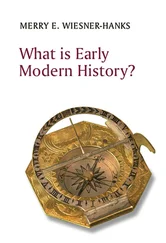R. Nisbet Bain - The Cambridge Modern History
Здесь есть возможность читать онлайн «R. Nisbet Bain - The Cambridge Modern History» — ознакомительный отрывок электронной книги совершенно бесплатно, а после прочтения отрывка купить полную версию. В некоторых случаях можно слушать аудио, скачать через торрент в формате fb2 и присутствует краткое содержание. Жанр: unrecognised, на английском языке. Описание произведения, (предисловие) а так же отзывы посетителей доступны на портале библиотеки ЛибКат.
- Название:The Cambridge Modern History
- Автор:
- Жанр:
- Год:неизвестен
- ISBN:нет данных
- Рейтинг книги:4 / 5. Голосов: 1
-
Избранное:Добавить в избранное
- Отзывы:
-
Ваша оценка:
- 80
- 1
- 2
- 3
- 4
- 5
The Cambridge Modern History: краткое содержание, описание и аннотация
Предлагаем к чтению аннотацию, описание, краткое содержание или предисловие (зависит от того, что написал сам автор книги «The Cambridge Modern History»). Если вы не нашли необходимую информацию о книге — напишите в комментариях, мы постараемся отыскать её.
The first series was planned by Lord Acton and edited by him with Stanley Leathes, Adolphus Ward and George Prothero.
The Cambridge Modern History Collection features all five original volumes:
Volume I: The Renaissance
Volume II: The Reformation, the End of the Middle Ages
Volume III The Wars of Religion
Volume IV: The 30 Years' War
Volume V: The Age of Louis XIV
The Cambridge Modern History — читать онлайн ознакомительный отрывок
Ниже представлен текст книги, разбитый по страницам. Система сохранения места последней прочитанной страницы, позволяет с удобством читать онлайн бесплатно книгу «The Cambridge Modern History», без необходимости каждый раз заново искать на чём Вы остановились. Поставьте закладку, и сможете в любой момент перейти на страницу, на которой закончили чтение.
Интервал:
Закладка:
The withdrawal of Genoa from the field, and the conquest of the Morea and Bosnia, followed by the death of Scanderbeg, devolved the whole defence of the coasts of the Illyrian peninsula and the Aegean upon the republic of St Mark. New Phocaea and the northern islands (Lemnos, Imbros, Samothrace, Thasos) had been successively conquered (1456-7); and in 1462 Lesbos, which had become a very nest of pirates from Spain and Sicily, was annexed to the Turkish dominion. Its last Genoese Lord, Nicolò Gattilusio, was strangled; one-third of the inhabitants were enslaved, one-third deported to augment the population of Constantinople, and the rest, the poorest and the worst, were left to till the land and gather in the vintage. As bases for maritime war in the Aegean, Venice still possessed Negroponte, Candia, together with Nauplia (“Romanian Naples”), and had command of the islands composing the Duchy of Naxos.
The inevitable war broke out in 1463, and its first scene was the Morea. Singlehanded, Venice was scarcely equal to the work, and the delay of ten years made the task more arduous.
Never was there a moment at which a common effort of the Christian powers of Europe was more imperatively needed; never a moment at which such an effort was less feasible. The monarchs were not blind to the menace of the new and deadly ecumenical force which was hurled within range of their kingdoms; they discerned and owned the peril; but internal policy and the consolidation of their power at home so wholly absorbed their interest, that nothing less than a Turkish advance to the Upper Danube or the Rhine would have availed to stir them into action. The Emperor Frederick III had not remained unmoved by the fall of Constantinople, but his strained relations with Hungary as well as the affairs of the Empire hindered him from stretching a hand to save Servia. Yet at his side was a man who fully realised the jeopardy and conceived the project, to which he devoted himself heart and soul, of stirring up the princes of Europe to wage a holy war against the infidel. This was Aeneas Sylvius, bishop of Siena. He utters his idea immediately after the fall of the City in a letter to Pope Nicholas V: “Mohammad is among us; the sabre of the Turks waves over our head; the Black Sea is shut to our ships; the foe possess Wallachia, whence they will pass into Hungary—and Germany. And we meanwhile live in strife and enmity among ourselves. The Kings of France and England are at war; the princes of Germany have leapt to arms against one another; Spain is seldom at peace, Italy never wins repose from conflicts for alien lordship. How much better to turn our arms against the enemies of our faith! It devolves upon you, Holy Father, to unite the kings and princes, and urge them to gather together to take counsel for the safety of the Christian world.”
A vain idea, inappropriate to the conditions of the age, but which was to hover in the air for many years to come and inspire abundance of useless talk and empty negotiations! The urgent words of Aeneas and a letter of the Emperor roused the Pope to an action which neither of them had contemplated; he issued a bull imposing a tithe for a war against the infidel,—thus, as Aeneas himself owned, seeking to cure one evil by another.
The chief interest perhaps of the efforts made by Nicholas and his successors to bring about an European peace, for the sake of driving back the Turk and recovering Constantinople, lies in the measure which they suggest of the distance which the world had travelled since the age of the Crusades. In the eleventh and in the twelfth, even in the thirteenth century, a religious sentiment could stir the princes and the peoples of Europe to go forth, not to avert a danger, but to rescue a holy place of pilgrimage. But in the fifteenth, though the unbeliever had won his way into Europe, had reached the Danube and threatened the Adriatic, the imminent danger to Christendom left Christendom lukewarm. Except religious zeal, there was no force which could compel an European effort. With the growth of “humanism” the old kind of religious enthusiasm had passed away. Pope Nicholas himself illustrated the change of things since the days of Urban II, when, at the very time of his proclaiming a Crusade, he privately sent agents to the East, to rescue from the deluge all Greek manuscripts they could lay hands on.
There were however special reasons, besides the general lukewarmness, that accounted for the failure of the first papal efforts. Nothing could be effectually done without the co-operation of Venice; and Venice, as we saw, made on her own account an advantageous treaty with Mohammad. The Emperor, who professed to support the idea of a Crusade, was hindered from energetic action by his ill relations with Hungary. The demand for money, which might have enabled the Pope to organise an armament, was highly unpopular. And not the least serious impediment was the intolerance which divided the Catholics from the Greek Church, and prevented them from feeling any true pity for the forlorn prospects of their fellow-Christians in Greece and Servia, or any sincere desire to save them. It was futile for Aeneas Sylvius to say that the Greeks were not heretics, but only schismatics; they were generally regarded as worse than infidels. The only prince who might have been ready to make sacrifices, if any common action had been organised, was Duke Philip of Burgundy. In the spring of 1454 a diet was held at Ratisbon, but the essential business was deferred to a second diet at Frankfort in the autumn; and it came to a third at Wienerisch-Neustadt (February, 1455). Aeneas Sylvius was persuasive and eloquent; but the meetings had no result. At the two later diets the appeals of John of Capistrano produced a sensation from which much was hoped. Like Peter the Hermit, he possessed the faculty of stirring the common folk in open-air assemblies. On the death of Pope Nicholas, the papal chair was filled by a Spaniard, Calixtus III (March, 1455), who seemed to have no less burning zeal for the holy war than John of Capistrano and Aeneas himself. He made a solemn vow to dedicate all his strength to the recovery of Constantinople and to the extermination of the “devilish sect” of Mohammad. For three and a half years he wrought and hoped, but with all his efforts could do no more than send a few ducats to Scanderbeg, or float a few galleys to harass the shores of the eastern Aegean. He was succeeded by Aeneas Sylvius, under the name of Pius II (August, 1458). While the West had been talking, Mohammad had been advancing; and in a great Council, assembled with much trouble at Mantua (1459), Pius said: “Each of his victories is the path to a new victory; he will conquer the kings of the West, abolish the Gospel, and ultimately impose the law of Mohammad on all peoples.” The insincere attitude of the Venetians frustrated any results that might have been brought about by the assembly at Mantua. These fruitless diets and councils are a dull and dead page in history; but they represent the efforts of the European states to discuss the same Eastern Question which we have seen them deal with in our own day at the Congress of Berlin.
One of the most obvious policies for the western enemies of Mohammad was to enter into communication with his enemies in the orient and attempt to concert some common action. Such negotiations had been set on foot by Popes Nicholas and Calixtus. The last two sovereigns of the dynasty of the Grand Comneni of Trebizond, who were now the representatives of the Roman Empire, John IV and David, had endeavoured to organise an alliance of the principalities of Asia Minor and Armenia, and to gain the support of Persia. It was upon Uzun Hasan, prince of the Turcomans of the White Sheep, that they above all relied. In 1459 David wrote to the Duke of Burgundy announcing the conclusion of such a league, and expressing the conviction that, if east and west were to strike together now, the Ottoman could be abolished from the earth. But the league availed not David, when two years later Mohammad came to destroy the empire of Trebizond (1461), and Uzun Hasan left him in the lurch. He surrendered on the offer of favourable treatment; but he was not more fortunate than the King of Bosnia; he and his family were afterwards put to death. At the same time Mohammad seized Genoese Amastris, and likewise Sinope, an independent Seljuk state; and thus he became master of the whole southern board of the Pontic sea.
Читать дальшеИнтервал:
Закладка:
Похожие книги на «The Cambridge Modern History»
Представляем Вашему вниманию похожие книги на «The Cambridge Modern History» списком для выбора. Мы отобрали схожую по названию и смыслу литературу в надежде предоставить читателям больше вариантов отыскать новые, интересные, ещё непрочитанные произведения.
Обсуждение, отзывы о книге «The Cambridge Modern History» и просто собственные мнения читателей. Оставьте ваши комментарии, напишите, что Вы думаете о произведении, его смысле или главных героях. Укажите что конкретно понравилось, а что нет, и почему Вы так считаете.












